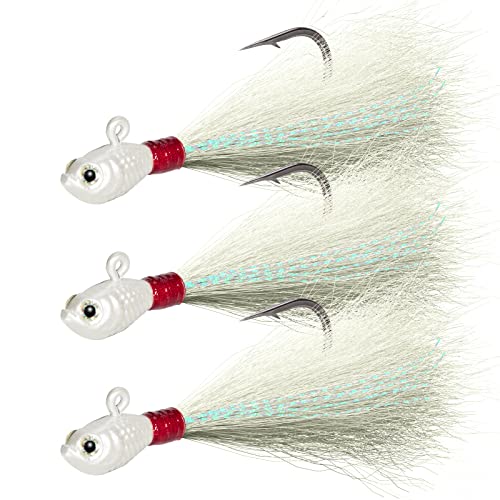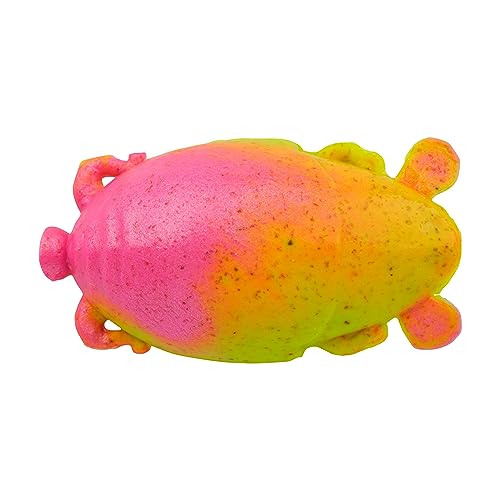Wind can significantly impact surf fishing by altering water conditions and the behavior of fish, affecting casting distance and accuracy, and making it more challenging to detect bites. As wind can create choppy waves and strong currents, it can stir up sediment and decrease water visibility, making it more difficult for fish to spot bait.
Additionally, wind can push baitfish and other food sources closer to the shoreline, attracting predatory fish. Understanding wind direction and intensity is crucial for surf fishermen, as it determines the best fishing spots, casting techniques, and the types of bait and lures to use.
By taking wind into account, anglers can optimize their surf fishing experience and increase their chances of success.

Credit: theunravel.com.au
How Wind Affects Surf Fishing
Wind is a crucial factor to consider when it comes to surf fishing. It plays a significant role in determining the success of your fishing expedition. Understanding how wind affects surf fishing is essential for any angler looking to reel in a big catch.
In this section, we will explore the various ways in which wind impacts surf fishing, from influencing bait movement to affecting fish behavior.
Wind’S Role In Bait Movement
When it comes to surf fishing, bait movement is vital in attracting fish. The wind can greatly impact how baits move in the water, which, in turn, affects fish behavior. Here are some key points to consider:
- Wind pushes bait along the surface of the water, creating a natural drift. This movement mimics the behavior of live bait and attracts predatory fish.
- Baitfish are often pushed closer to the shore by onshore winds. This concentration of bait near the surf zone increases the chances of catching larger fish.
- Cross-shore winds can move bait along the shoreline, making it easier for predators to spot and strike. Understanding wind patterns can help you position yourself in the right spot to take advantage of this movement.
Understanding Wind-Driven Currents
Wind not only affects bait movement but also creates currents within the surf zone. These currents can significantly impact your fishing experience. Let’s delve into some key points:
- Onshore winds generate a strong seaward current, known as a rip current. These currents pull baitfish and other food sources out to sea, attracting larger fish. Understanding where these rip currents are can help you position your bait strategically.
- Offshore winds, on the other hand, push water toward the shore, creating a wave-driven current. This current can disorient baitfish and make them more vulnerable to predators.
- Cross-shore winds can lead to longshore currents, which run parallel to the shoreline. These currents can carry bait along the beach, attracting fish looking for an easy meal.
The Impact Of Wind On Fish Behavior
Wind not only affects the movement of bait but also influences the behavior of fish themselves. Here are some crucial points to consider:
- Wind creates surface disturbances and ripples, which can attract fish by signaling the presence of food.
- Strong winds can stir up the water, reducing visibility and making fish more reliant on other senses, such as smell or vibration, to locate prey.
- In windy conditions, fish tend to be more active, as the choppier waves and increased water movement make them more comfortable and confident in searching for food.
Understanding how wind affects surf fishing is essential for any angler looking to improve their catch rate. By considering wind patterns, bait movement, and fish behavior, you can optimize your fishing strategy and increase your chances of success. So, the next time you head out for a day of surf fishing, don’t overlook the significant role that wind plays in this exhilarating sport.
The Best Wind Conditions For Surf Fishing
Surf fishing is not only an enjoyable hobby but also a great way to catch some delicious fish. However, your success in surf fishing can be greatly influenced by the wind conditions. Understanding how wind affects surf fishing is crucial for any angler looking to reel in a big catch.
In this section, we will explore the best wind conditions for surf fishing and how you can use the wind to your advantage.
Optimal Wind Speed For Surf Fishing
The speed of the wind plays a crucial role in surf fishing. Here are some key points to keep in mind:
- The ideal wind speed for surf fishing is between 5-15 miles per hour.
- Too little wind can result in calm water, making it difficult to attract fish.
- Conversely, strong winds of over 20 miles per hour can create rough surf conditions, making it challenging to cast your line and maintain your footing.
Wind Direction And Its Influence On Fishing Success
The direction from which the wind blows can significantly impact your fishing success. Consider the following:
- A wind blowing directly onshore is ideal for surf fishing as it pushes bait fish and food closer to the shore, attracting larger predatory fish.
- When the wind blows offshore, it creates a current that can carry bait fish and other food sources away from the shore, making it harder to attract fish.
- Crosswinds can create unpredictable currents and make it challenging to cast your line accurately. However, they can also push bait fish closer to the shore, offering opportunities to catch fish.
Using Wind To Your Advantage: Tactics And Techniques
Harnessing the power of the wind can make a significant difference in your surf fishing experience. Here are some tactics and techniques to consider:
- Position yourself upwind of your desired fishing spot to allow your line and bait to be carried farther into the water.
- Use the wind to your advantage by casting parallel to the beach, taking advantage of the current created by the wind.
- If fishing in strong winds, consider using heavier sinkers to keep your line from drifting too far or getting tangled.
- Pay attention to wind patterns and adjust your fishing strategy accordingly. Experiment with different angles and casting techniques to find what works best for you.
Understanding how wind affects surf fishing is essential for any angler. By considering the optimal wind speed, wind direction, and using wind to your advantage, you can increase your chances of a successful fishing trip. So, next time you head out to the surf, pay close attention to the wind conditions and adjust your tactics accordingly.
Happy fishing!
Gear And Strategies For Dealing With Wind
Strong winds can have a significant impact on surf fishing, making it more challenging to catch fish. However, with the right gear and strategies, you can still maximize your surf fishing success even in windy conditions. In this section, we will explore the key considerations when fishing in the wind and the techniques to overcome its challenges.
Selecting The Right Fishing Gear For Windy Conditions
When fishing in windy conditions, it’s crucial to have the appropriate gear to tackle the challenges. Here are the key points to consider:
- Rod selection: Opt for a longer fishing rod, preferably around 9 to 12 feet. A longer rod offers better casting distance and control, allowing you to reach fish beyond the tumultuous surf. Additionally, a rod with a faster action will help you combat the wind’s resistance.
- Reel choice: Select a reel with a high line capacity and smooth drag system. This will help you deal with any extra tension caused by the wind.
- Line strength: Use a heavier fishing line to reduce the effect of wind drag. A thick and robust line will enhance your chances of landing bigger fish and prevent breakage due to the wind’s force.
- Weighted sinkers: To keep your bait in position, consider using sinkers with additional weight. This will counteract the wind’s influence and keep your bait closer to the desired fishing spot.
- Windbreakers and gloves: Don’t forget to equip yourself with appropriate clothing. Windbreakers not only protect you from the chill but also reduce wind resistance while casting. Additionally, gloves can provide you with a better grip and protect your hands from abrasive fishing lines.
Adjusting Your Casting Techniques For Wind
Casting in windy conditions requires some adjustments to ensure accuracy and precision. Here are a few techniques you can employ:
- Sidearm or low cast: Instead of a traditional overhead cast, try casting from a sidearm or low angle. This technique minimizes wind interference and maintains control over your bait placement.
- Powerful release: Increase the power of your cast to counteract the resistance caused by the wind. A strong and swift release will help push your bait farther, allowing it to reach areas where fish are active.
- Wind direction awareness: Be mindful of the wind’s direction and adjust your casting accordingly. Cast with the wind behind you to take advantage of its assistance. Casting against the wind can lead to reduced accuracy and distance.
- Shorten your cast: Consider shortening your casting distance to avoid excessive line exposure to the wind. This will help maintain control and reduce the risk of tangled lines.
Maximizing Your Surf Fishing Success In Challenging Windy Conditions
To increase your chances of success in windy conditions, follow these strategies:
- Choose sheltered areas: Look for areas with natural windbreaks, such as cliffs, rock formations, or jetties. These features provide some protection from the wind and create calmer water for fish to gather.
- Fish during slower tides: Plan your fishing trips during slower tides when the wind’s impact is less pronounced. Aim for periods when the wind is expected to be calmer, such as early mornings or late afternoons.
- Observe bait movements: Wind-blown currents can concentrate baitfish in specific areas. Keep an eye out for areas where baitfish are gathering as this indicates potential feeding zones for larger fish.
- Experiment with lures: In windy conditions, lures that mimic wounded or distressed baitfish tend to be more effective. Consider using lures with a higher retrieve rate or those designed to create vibrations in the water, attracting fish even amidst the windy chaos.
Successfully surf fishing in windy conditions requires the right gear, adaptable casting techniques, and strategic approaches. By selecting the appropriate equipment, adjusting your casting technique, and employing smart strategies, you can still enjoy a productive day of fishing, even when the wind is against you.
So gear up, refine your techniques, and embrace the challenge of surf fishing in windy conditions. Happy fishing!
Conclusion
Wind plays a significant role in the art of surf fishing. Understanding how wind affects the behavior of fish and the movement of bait can greatly enhance your chances of success. When fishing in a gentle breeze, pay attention to the direction as it can determine where fish are likely to be located.
The wind can also impact the visibility of the water, making it easier or more difficult for fish to spot your bait. Additionally, wind can create ripples and waves, which can attract fish and stir up the water, making it easier to lure in your catch.
However, be cautious of strong winds as they can make casting and keeping your line steady more challenging. Therefore, adjusting your fishing techniques and selecting the right bait and equipment based on the wind conditions is crucial for a successful surf fishing experience.






